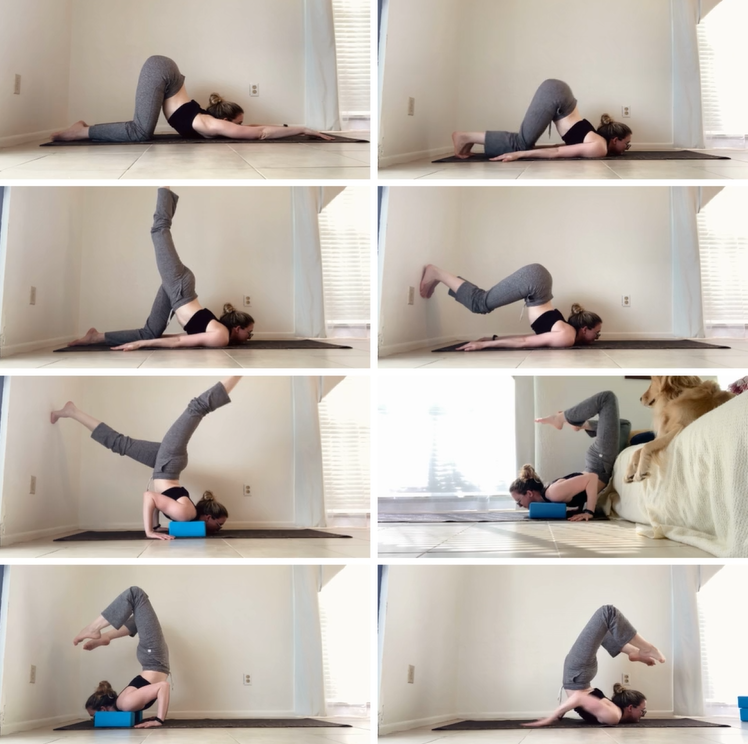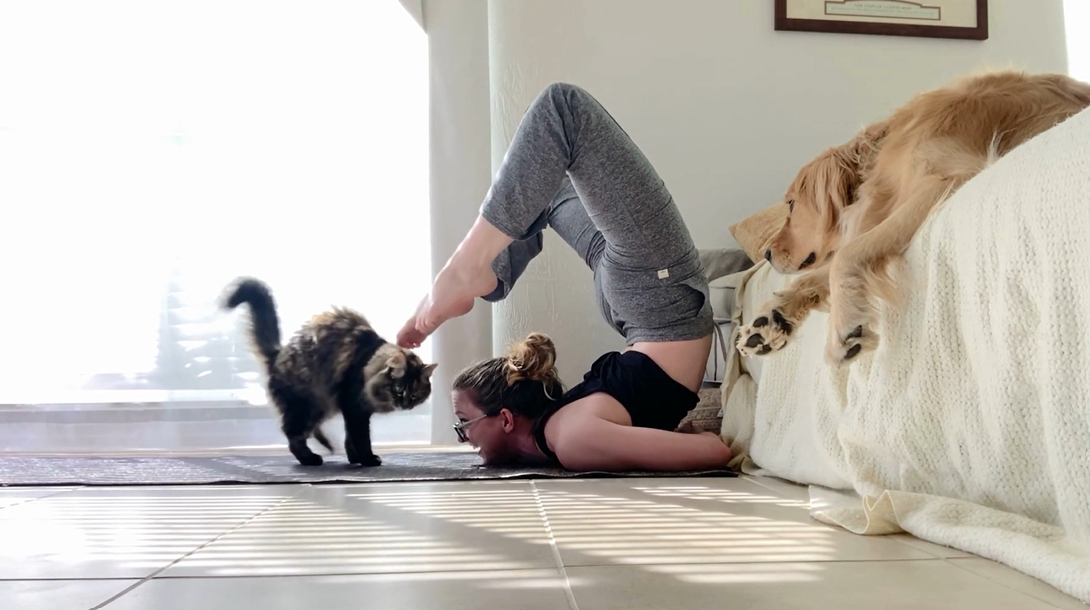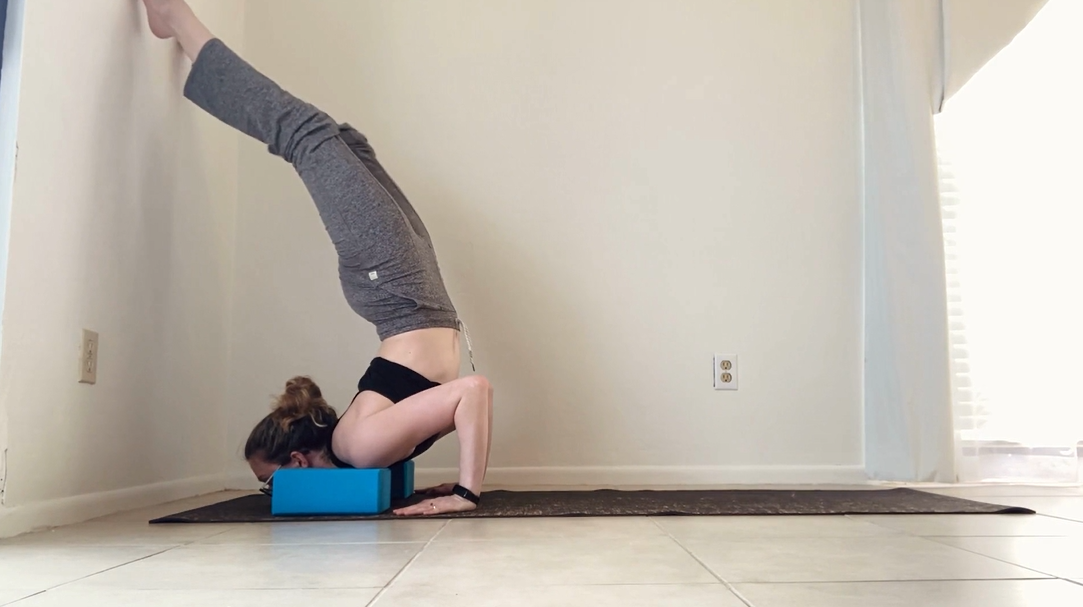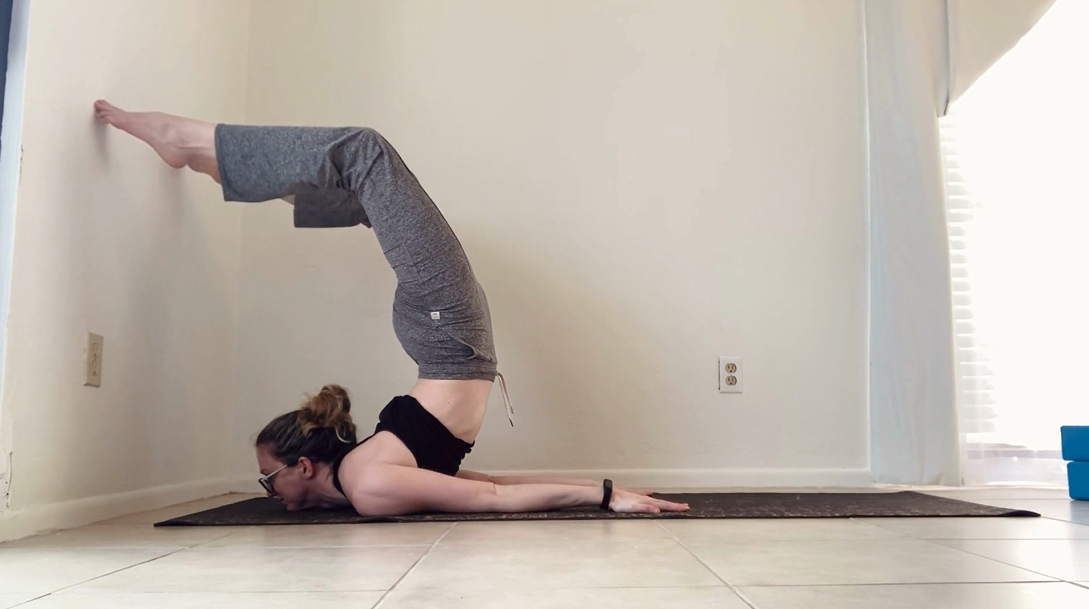Example Chest Stand Training Progression
Example Chest Stand Training Progression
A chest stand is arguably the most iconic contortion pose, requiring extreme levels of back flexibility (from the entire spine: cervical, thoracic, and lumbar), as well as incredible core control. It’s no wonder so many students dream to be able to one day do a chest stand! In this post we’ll take a look at an example of skill progressions students may encounter working towards their chest stand.
Important Disclaimer Up Front: This is not a tutorial on how to do a chest stand. This is not even a tutorial on how to do any of the skills listed in this blog post. Rather this is an example of a progression of skillwork a student might follow when working towards a chest stand, so you can see how incremental skills can work towards the longer term goal.
A chest stand is an advanced contortion move that requires a lot of muscular engagement (and obviously flexibility) to execute safely. Working with an experienced coach is the best way to work on the active flexibility to build up to poses like the ones shown in this post, and learn the proper technique for contortion-style backbending. I’m not just saying that because I’m a coach (heck, I’m happy to recommend other extremely qualified coaches I love like Amy Goh, Tran Finn, and Micah Walters). No one wants to fuck up their back - especially your neck. So please do not try these poses without guidance from a coach.
First Off: Suggested Prerequisites Before Starting Chest Stand Work
I am not a flexibility god. These prerequisites are not gospel. Other coaches may teach different progressions and handle prerecs differently, but these two I find the most beneficial for ensuring students have the minimum amount of flexibility (and strength) to safely work through chest and chin-stand -esque preparatory skills.
#1: Able to comfortably hold a puppy pose with your chin and chest touching the floor.
By “comfortable” I mean being able to chill out in this pose and breathe, with zero neck or back pain. If you can hold this pose, congratulations! You’re essentially already doing a chest stand (albeit with your legs on the floor). So you’re already halfway toward your goal!
#2: Have some previous experience contortion training.
Chest stands are an advanced move. Even if you are blessed with lots of preexisting flexibility, a huge amount of contortion skillwork is about engaging your muscles to safely control the bend. Even if you can technically flop yourself into a chest stand (I'm looking at you, noodle-y gymnastics kids…), it is dangerous to do without the proper core control. Being comfortable moderating the depth of a bend, especially in a pose where you have your core/back supporting the weight of your legs (like a forearm stand) is a helpful foundation. Catie Brier (an acutal contortion goddess, in my opinion) has a great article on why the fundamentals, learning technique, focusing on your conditioning, and only then working on appropriately-leveled skillwork is so gosh darn important: The difference between contortion and flexibility.
Basically: Learn to walk before you run, folks.
Example Skill Progression for Chin/Chest Stands
Here’s a rough progression of skills that progressively get more challenging, and closer and closer to a “real” freestanding chest stand.
To re-emphasize: these poses are skills, not conditioning drills and not stretches. These are not the things you work on to get more flexible to be able to do a chest stand. These will not make you more flexible. There are lots of other active flexibility drills and exercises you should be doing to improve your flexibility, strength, and control that are the bread-and-butter of working towards a chest stand. Think of these rather as a “snapshot” of a skill that you can use to showcase/challenge your current flexibility (or potentially using easier variations as the base for more challenging versions of conditioning drills - at your coach’s discretion).
Puppy Pose Variations
Puppy Pose with Chin and Chest on the Floor
What I look for: chest contact with floor, comfortable breathing*, chin resting on floor but not smooshing lower face into the mat
* “comfortable breathing,” being pain free, and proper core engagement are requirements that applies to all of these variations (and any contortion pose, for that matter!)
Puppy Pose with Arms Straight Back
What I look for: shoulder contact with the floor, space between the throat and the floor, able to lift chin off the ground for a moment
Puppy Pose with One Leg Straight
What I look for: shoulder contact, comfortable pressing hips forwards (slightly), comfortable bearing more weight in the shoulders/chin/neck
Puppy Pose with Both Legs Straight
What I look for: (same as above)
Puppy Pose with One Leg Lifted
What I look for: (same as above)
Puppy Pose with Feet Up the Wall (Low)
What I look for: maintaining shoulder contact with the floor even as hips lift, control with being able to shift hips forwards in space
Shoulder Block Chin Stand with Feet up the Wall
What I look for: appropriate use of blocks and hand placement for balance and control, greater range of motion in moving hips, able to control lifting vs. dropping the ribs to moderate the arch in the back, ability to lift chin off the floor
Shoulder Block Chin Stand with Feet up the Wall & Leg Reach
What I look for: (same as a bove)
Supported Chest Stand Variations
Supported Shoulder Block Chin Stand
What I look for: ability to adjust blocks (and hip/belly support) to control whether more lower or upper back is used, ability to lift the chin off the floor
Supported Chest Stand
What I look for: (same as above)
Belly (Temporarily) Supported Chest Stand Hip Reach
What I look for: control with lifting hips away from support prop, even if just for a moment
Wall Spotted Variations
Chin Stand Kick Up with Shoulder Blocks
What I look for: appropriate (safe) block placement, consistency of “successful” kick ups, control in power behind kicks, able to adjust hip position and moderate the bend, appropriate controlled exit
Chin Stand Kick Up to Balance with Shoulder Blocks
What I look for: control with using hands/arms to moderate balance, appropriate controlled exit
Chest Stand Kick Up
What I look for: consistency of kicking up, appropriate choice of arm position/placement, shoulder contact on floor, able to adjust hip position and moderate the amount/location of bend, appropriate controlled exit
Chest Stand Kick Up to Balance
What I look for: (same as above) + balance control
Full Chest Stand
Kick Up to Chest Stand
What I look for: Pretty much everything in all of the previous skills:
pain free, comfortable breathing, proper core engagement
appropriate arm position choice for balance
body control to adjust chest, ribs, and hips
consistent controlled exits
Once you can consistently kick up into a strong/safe/proper chest stand, the world really is your oyster when it comes to variations - there are tons of different ways you can play with styling your arms and legs, as well as work on fancier entrances and exits.
Related Content
Recommended Upcoming Workshop:
Chest Stands 101
Friday February 24, 6pm-7pm Central Time (US)
This intermediate-level workshop will be a deep dive into one of the most iconic contortion poses: the chin/chest stand. We'll cover the fundamentals of active back flexibility and safe backbending technique for the deep neck, upper, and lower back flexibility required for this skill.
PREREQUISITES: Students can comfortably get chest to the ground in a puppy pose with straight arms.
REQUIRED PROPS: 2 yoga blocks, wall space
All students will receive a copy of the workshop recording.
Register for the workshop here (or if you know you won’t be able to join “live,” you can register to get a copy of the recording here).



















